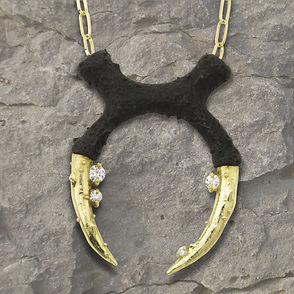

RADIOLARIAN
I've always been known for casting items from nature into our jewelry, and indeed this makes for gorgeous textures and unexpected shapes. But you can only cast so many branches and leaves before your designs start to feel limited…so I turned towards wax carving to interpret the organic forms I discover. My latest collection, called Radiolarian, is inspired by the single celled marine organism of the same name, and we found it in the same book from which our Coral collection was born – Ernst Haeckel’s Art Forms in Nature.
Carving waxes requires quite a bit of careful measuring and planning – laying out the design is the most important and time consuming part of the process – steps I didn’t have to take when casting a piece of drift wood or Jacaranda pod. Turns out the method is very revealing! While I have always known that to get a ‘random’ or ‘organic’ look one must measure and layout carefully, but I had no idea just how symmetrical nature is when viewed at a micro level. Seemingly haphazard petals or branches are actually laid out with surprisingly precise proportions that have given me a new appreciation for nature. The Fibonacci sequence is a good example of how nature is based on numbers, but the deeper I delve the more we see ratios and formulas in everything I do. I find it ironic how much time I spend with my digital millimeter gauge and calculator, given the organic nature of my jewelry. My Radiolarian collection, despite the casual looking shapes, is all based on specific proportions. At last minute, however, once the shapes are in place, I let go of the formulas and ‘breath life’ into the piece by adding indiscriminate granules and thorns. It just wouldn’t be mine without a little chaos!












